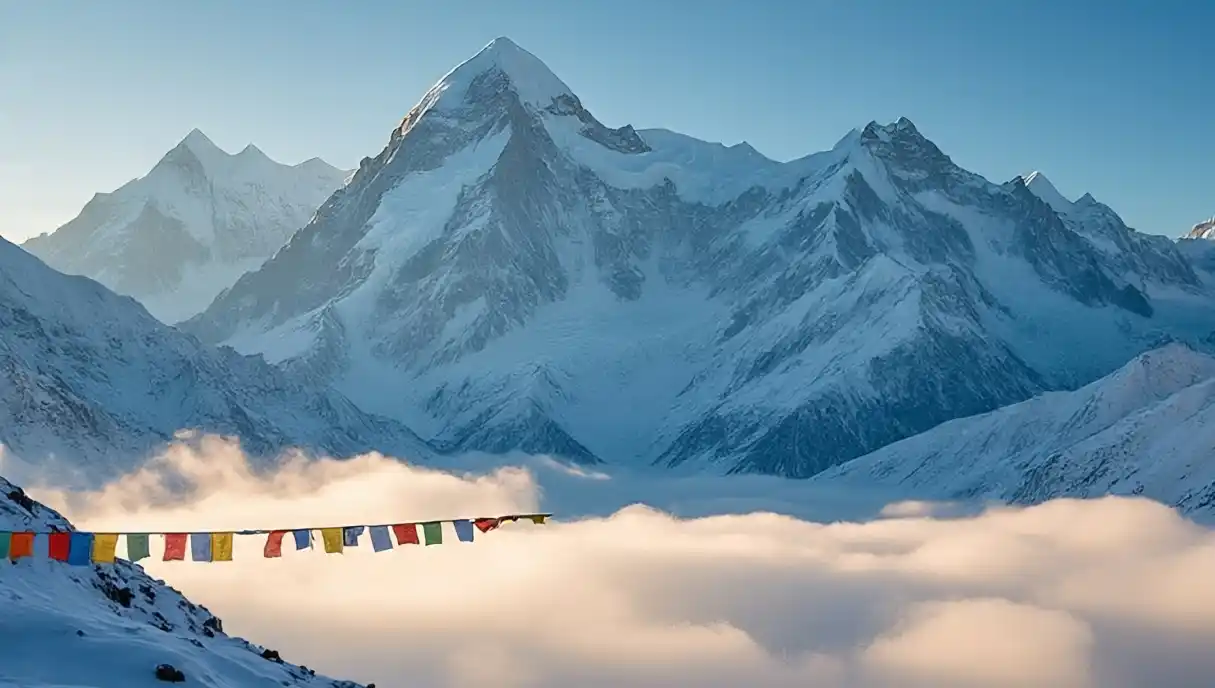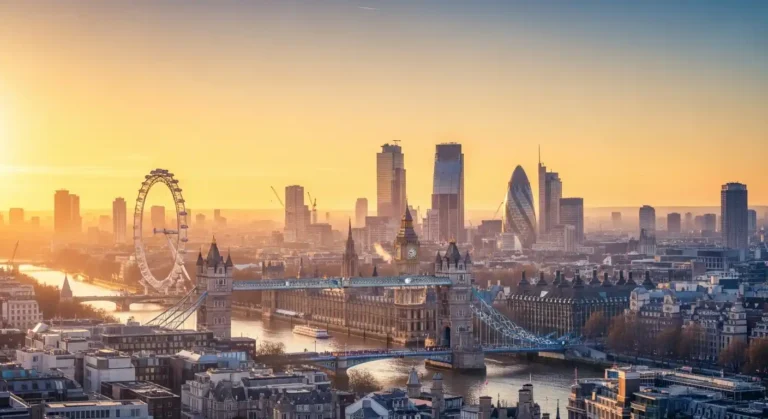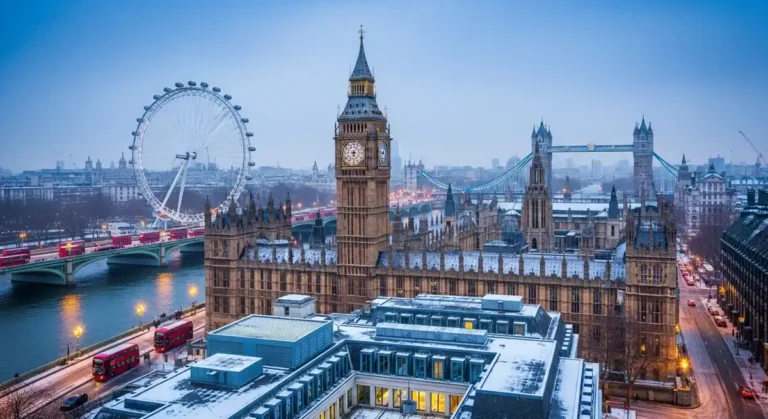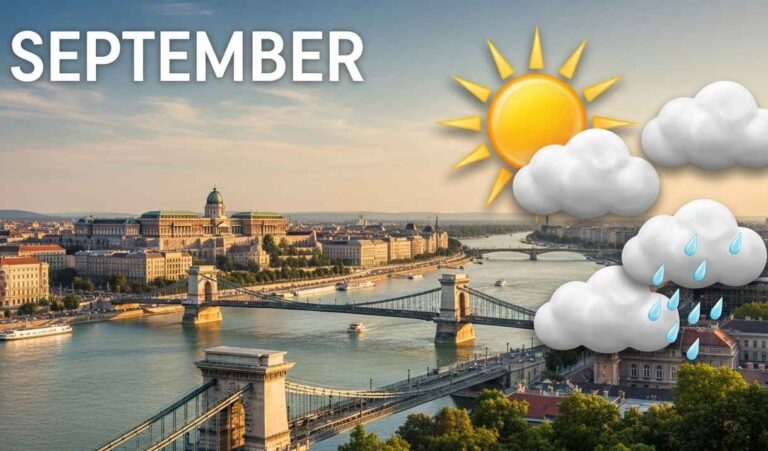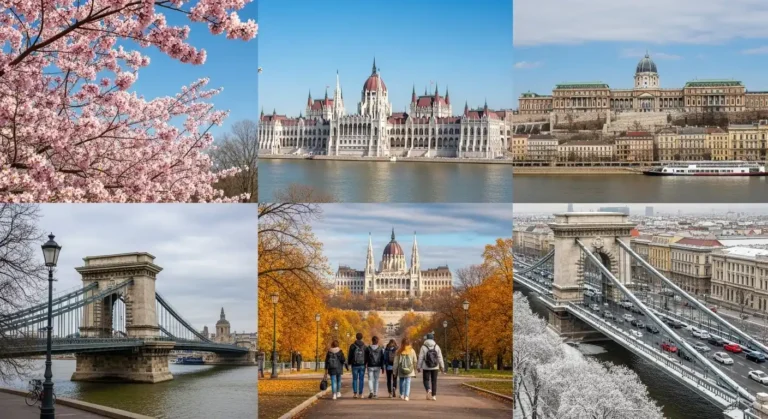Ultimate Snow Guide to Nepal: Magical Winter Escapes Await!
Yes, it snows in Nepal, especially in the higher altitude regions like the Himalayas, Everest region, and Annapurna region during winter and early spring. Snowfall can also be seen around Kathmandu in hill stations such as Chandragiri, Phulchowki Hill, and Kakani.
Nepal offers beautiful snowy views in the winter, especially for those who love trekking. If you travel to higher altitude regions such as the Everest region, Annapurna region, or other parts of the Himalayas, you’ll find permanent snow above 3,000 metres.
These places are popular for their clear views and snowy trails from December to early spring.
- Top Snowfall Season: Winter months from December to February bring the most snow, especially above 3,000m in regions like Everest, Annapurna, and Langtang.
- Snow Near Cities: Nearby hill stations like Phulchowki, Chandragiri, Kakani, and occasionally Nagarkot and Daman, offer light snow close to Kathmandu.
- Winter Trekking Experience: Enjoy peaceful trails, snow-covered landscapes, and fewer tourists on treks like Mardi Himal, Ghorepani Poon Hill, and Langtang Valley.
- Best Time to Visit: December to February is ideal for snow views, clear skies, and crisp air, making it perfect for photography and snow trekking.
- Easy Access Snow Spots: Places like Kalinchowk and Chandragiri Hills are reachable by road or cable car, offering quick snow experiences without long treks.
- Snow Views in Pokhara: While Pokhara doesn’t get snow, it offers spectacular views of the snow-capped Annapurna and Dhaulagiri ranges during winter.
- Top Snow Destinations: Visit Kalinchowk, Phulchowki, Chandragiri, Daman, and Everest/Annapurna regions for the best winter snow adventures.
- What to Pack: Bring thermal wear, waterproof boots and jackets, gloves, sunglasses, sunscreen, and a warm sleeping bag for cold nights.
- Cultural & Scenic Bonus: Winter also features vibrant cultural festivals like Losar, along with calm mountain villages and peaceful snow-covered landscapes.
Closer to the Kathmandu Valley, places like Chandragiri, Phulchowki Hill, and Kakani sometimes receive light snowfall. The chance of seeing snow here is higher during February.
These hill stations are great for a short trip to catch snow, especially for families and first-time visitors. Though snow in these areas may melt away quickly, it still creates a magical experience.
The low season for tourism means fewer trekkers, making winter a peaceful time to trek. Many people prefer visiting during this time for a quieter and more scenic adventure.
Whether it’s for the snowy trails or just the beauty of frosty mornings in Kathmandu, Nepal offers a memorable snow experience.
Does it Snow in Kathmandu?
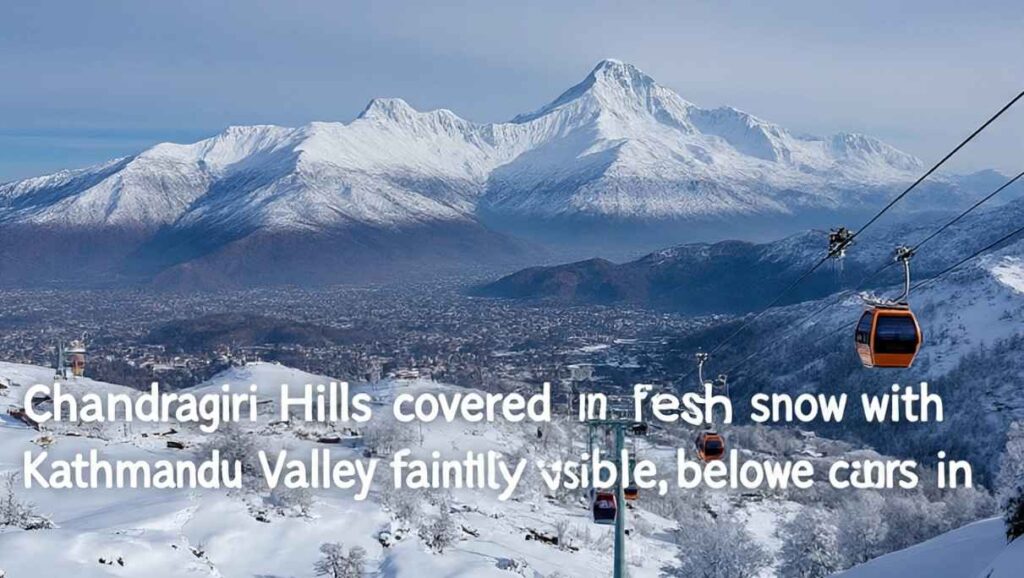
Snowfall in Kathmandu is a rare and special experience, but it can happen. The city itself sees snow only once in many years, with recorded snow events in 1945, 2007, and 2019.
However, the coldest months—January and February—bring the best chance of snow in the surrounding hills.
To truly enjoy snowfall, it’s best to head to higher elevation places like Phulchowki and Chandragiri.
These areas are more likely to receive snow, especially after rainfall, when the temperature drops close to 0°C in the mornings and nights, and ranges up to 18°C in the afternoons. The weather during this time is perfect for a snowy escape near the valley.
If you’re visiting during the peak of winter, do consider a short trip to the hills. It’s a wonderful occasion to see fresh snow and enjoy the cold, crisp air. Snow in Kathmandu may be light, but the experience is unforgettable and magical when it does occur.
Does it Snow in Pokhara?
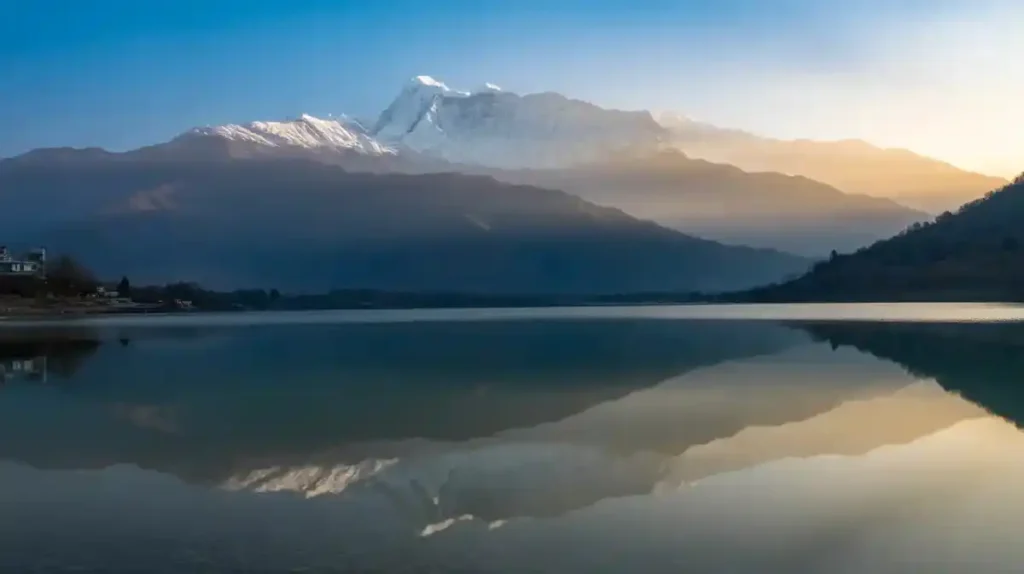
Yes, while Pokhara itself doesn’t usually receive snowfall due to its lower altitude, it offers stunning views of the snow-covered Annapurna and Dhaulagiri mountain ranges during winter. The best time to enjoy these snow-capped peaks is in December, January, and February.
Pokhara is a beautiful city in Nepal, sitting at around 822 metres of elevation. While snowfall is not common in the city itself, the experience of seeing the snow-capped peaks nearby is magical.
From the lakeside or hilltop viewpoints, you can enjoy views of the Annapurna and Dhaulagiri ranges, which are covered in heavy snow during the winter months.
The best time to see this natural wonder is from December to February, especially early in the morning when the skies are clear.
The surrounding mountains are visible, and the cold night air makes it feel like winter without the need to trek to higher altitude. A warm jacket is recommended, especially in the evening.
According to one helpful Reddit thread, this season is a favorite for visitors who want to enjoy the snow-covered mountains without having to go far.
Pokhara is known for being one of the best places to relax and take in the views. The snow, the time of year, and the peaceful vibe all create a special experience, unlike other areas.
Snow on Nepal’s Famous Trekking Routes
Trekking in Nepal during winter is a magical experience. As snow gently blankets the Himalayan trails, it turns the mountains into glowing white wonderlands.
Between December and February, the views become even more surreal. The landscapes shine under clear skies, and the silence of the snow makes each step feel special.
Trekkers enjoy peaceful walks, crisp air, and less crowded paths. With the right gear, like crampons, thermal layers, a down jacket, and a cozy sleeping bag, the journey becomes safe and warm.
Carrying a Nalgene bottle with hot water adds extra comfort. This time of year also offers unique cultural experiences in tea houses across ethnic villages where locals live their charming rural life.
Popular Snow Treks in Nepal
Ghorepani Poon Hill Trek
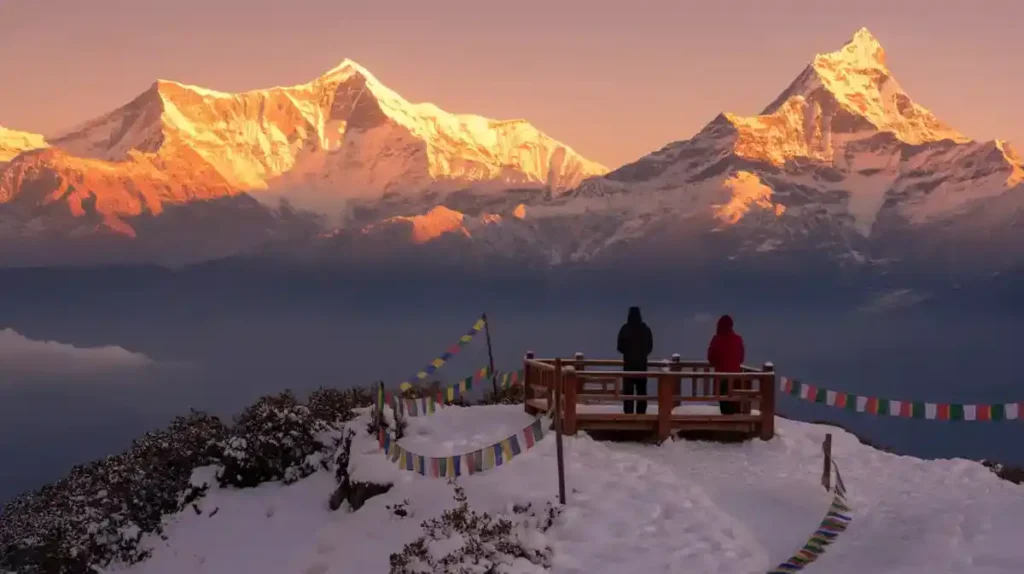
This short trek offers stunning sunrise views of the Annapurna and Dhaulagiri ranges. The trail passes through snow-covered forests filled with oak and rhododendrons, leading to a golden morning light at Poon Hill.
Langtang Valley Trek
Close to Kathmandu, this trail provides access to snow-dusted valleys, glaciers, and scenic spots like Kyanjin Ri. It’s considered one of the safest high-altitude treks in Nepal, with incredible views and gentle altitude changes.
Everest Panorama Trek
Perfect for those wanting a taste of Everest without the challenges of the Base Camp, this trek features Namche Bazaar, Tengboche Monastery, and views of Ama Dablam. The snowy route through Sagarmatha National Park adds charm to this peaceful journey.
Mardi Himal Trek
This ridge walk beneath Machhapuchhre transforms into a winter dream with shining ridgelines and springs along the way. The quiet trails and magical vista make it one of the most mesmerizing winter treks.
Khopra Danda Trek
A lesser-known but equally beautiful trek, it leads to Kaire Lake, surrounded by the mighty Himalayas. The reflection of snowy peaks on the lake creates a truly extraordinary scene.
Each of these trails reveals Nepal’s scenic beauty, traditions, and the vibrant soul of the Himalayas in winter. With careful planning, updated weather checks, and the support of a porter or guide, snow trekking becomes a dream experience for enthusiasts of all ages.
Winter in Nepal: Climate, Conditions & Travel Experience
Winter in Nepal is a beautiful season that brings out the best of both nature and culture. From December to February, travelers can enjoy stunning views of the Himalayas, peaceful trails, and vibrant festivals. It’s a perfect time to explore the country’s diverse regions without large tourist crowds.
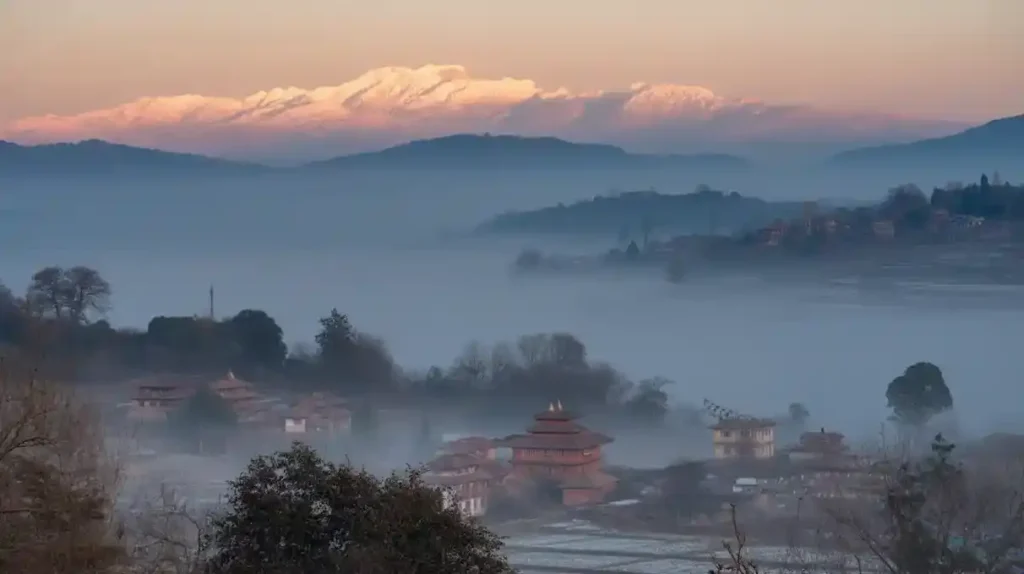
Weather and Climate Highlights
In the Kathmandu Valley, winter days are sunny and pleasant, with temperatures ranging from 2°C to 18°C. Places like Pokhara remain mild, making them ideal for relaxation and exploration.
Higher altitudes, such as the Everest region, experience snowfall, adding a magical touch to the landscape. Despite the chill in the air, the skies remain mostly clear, perfect for photography and sightseeing.
Some regions, like Mustang and Manang, lie in the rain-shadow of the Himalayas, so they stay dry and accessible. Meanwhile, Chitwan National Park in the southern plains offers great chances to see wildlife like deer, tigers, and the one-horned rhinoceros.
Travel Experience and Activities
Winter in Nepal is known for peaceful trekking in moderate elevations where trails are less crowded. The air is fresh, the views are brilliant, and the scenery is unforgettable. Popular trekking routes stay open, and the snow-capped peaks make every step scenic.
Cultural lovers will enjoy Losar, the Tibetan New Year, and other local festivals held in winter. These events give a deep look into Nepal’s rich traditions and monasteries, offering meaningful experiences beyond the mountains.
Month-by-Month Snowfall Guide
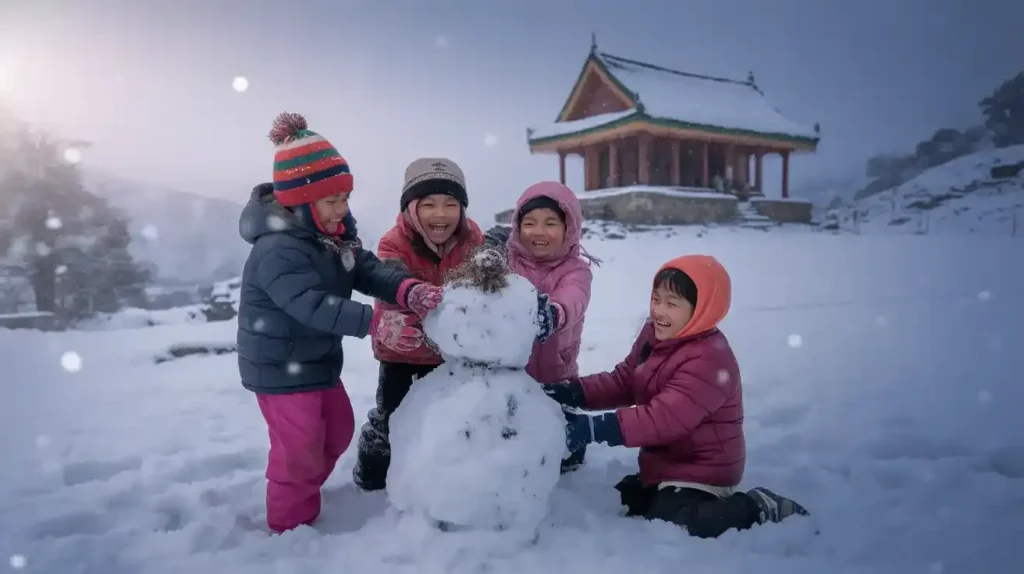
Nepal turns into a stunning snow-covered paradise during the winter months. From December to February, the country’s mountain regions offer an incredible snow experience for snow lovers, hikers, and tourists.
These months are known for their clear skies, peaceful landscapes, and magical views of snow-covered peaks and trails. Whether you’re visiting popular places like Kalinchowk, Langtang Valley, or the Annapurna Circuit, the winter season offers a truly unique and magical adventure.
Does it Snow in Nepal in December?
Yes, December brings the start of the winter wonderland season. Snow begins to fall in areas above 3000 metres, such as Phulshowki, Nagarkot, and Chandragiri. These spots are close to Kathmandu and are perfect for short snow hikes.
The weather is cold but often clear, making it ideal for those who want to enjoy snow-covered landscapes without heavy trekking.
Kalinchowk, a popular winter spot, becomes a hotspot for local and international tourists seeking snowy peaks and snowfall views. The terrain remains easy to manage with proper gear, and the scenery is calm, peaceful, and breathtaking.
Does it Snow in Nepal in January?
January is the coldest month in Nepal and offers the best chances for deep snowfall in higher altitudes. Destinations like Everest Base Camp, Langtang Valley, and Annapurna Base Camp turn into full snow-covered terrains. You can expect to see frozen lakes, snowy trails, and pure white valleys.
For snow trekking, group trekking is advised. Make sure to carry sturdy boots, warm clothing, hiking gear, and microspikes for safety. Snow adds a soft light to the mountains, making every step a moment to enjoy the beauty and charm of the snow season Nepal.
Does it Snow in Nepal in February?
February continues the snowfall season with clear skies and comfortable cold temperatures. This is one of the best times for safe trekking as trails are still snow-covered, but the weather starts to become more balanced and warmer by the end of the month.
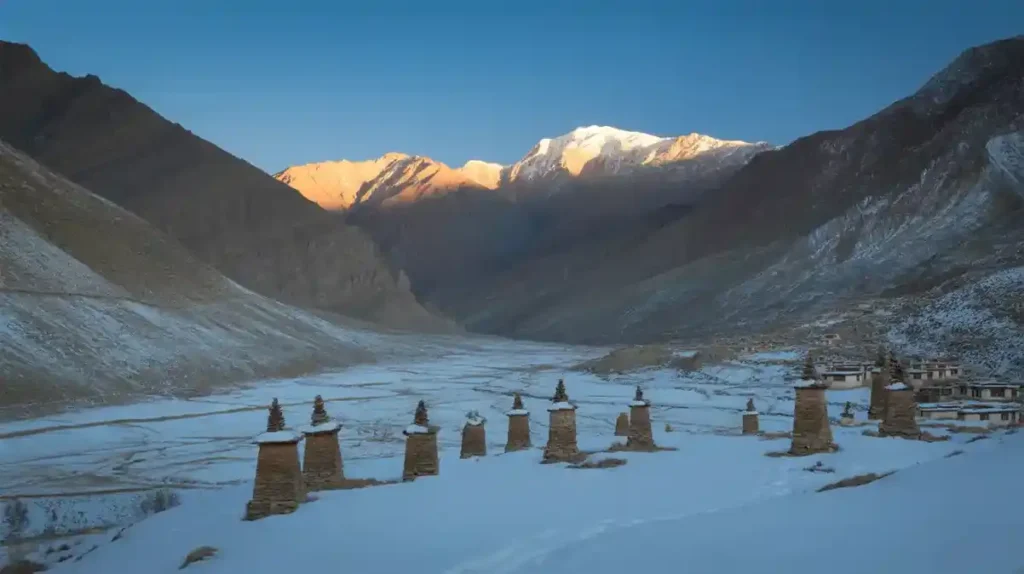
It’s a perfect time to explore Dolpo, the Mardi Himal Trek, and the Annapurna Circuit. The elevation keeps the snow thick and fresh. You can enjoy the snow magic across snowy destinations, peaceful valleys, and stunning mountain views. With good preparation, these winter treks become memorable adventures.
These three months—December, January, and February—are ideal for those seeking snowfall tourism, snow hiking Nepal, and unforgettable snow opportunities. The seasonal snowfall, mixed with the calmness of the terrain and clear weather, creates picture-perfect scenery that defines Nepal’s snowfall time.
Best Time to Visit Nepal for Snow
Best time to visit Nepal for snow is from December to February, when the mountains are beautifully snow-covered, the skies are clear, and the air is crisp—perfect for scenic views and peaceful treks.
From December to February, Nepal becomes a winter wonderland. The Himalayas, including the Everest region and Annapurna Circuit, are blanketed in soft, white snow, creating breathtaking views. The skies are often clear, making it one of the best times for mountain lovers and snow seekers.
These months offer the clearest skies of the year. You’ll enjoy snow-covered landscapes, cool air, and bright sunny days. While it’s winter, the daytime temperatures in places like Kathmandu stay mild—around 18–20°C in January and rise to 22°C by February.
Trekking is still possible, especially if you’re well-prepared with proper gear. Trails like the Annapurna and Everest offer fewer crowds, peaceful paths, and clear views of the 8,000-metre Himalayan giants. Regions such as Ghandruk and Phulchowki Hill are popular for easy walks and soft snowfall.
This off-season is also great for enjoying snow sports or even a chance to spot a leopard in remote mountain areas. If you’re looking for the ideal mix of scenic beauty, snow, and adventure, this time of year is perfect.
With crisp, dry weather, sunny skies, and majestic mountains, winter in Nepal is a truly unique and peaceful escape.
Top 7 Snowfall Destinations in Nepal (With Travel Tips)
Nepal is a stunning winter getaway with magical snowfall spots like Kalinchowk, Nagarkot, Daman, Chandragiri, and Phulchowki. For more adventurous snow lovers, the Annapurna and Everest regions offer thrilling treks with breathtaking snow-covered landscapes.
These destinations are easily accessible from Kathmandu and ideal for enjoying snow, scenic views, and peaceful mountain experiences.
1. Kalinchowk
Kalinchowk, in the Dolakha District, is one of Nepal’s most popular snowfall spots. Located about 150 km east of Kathmandu, it’s easily accessible by road in around 8 hours. Snowfall usually begins from December to February, creating a peaceful snow-covered landscape.
The Kalinchowk Bhagwati Temple, reached by Cable Car, adds a spiritual charm. Activities include hiking, trekking, and enjoying views of the Himalayas. Make sure to book transportation and accommodation in advance, especially during peak season.
2. Nagarkot
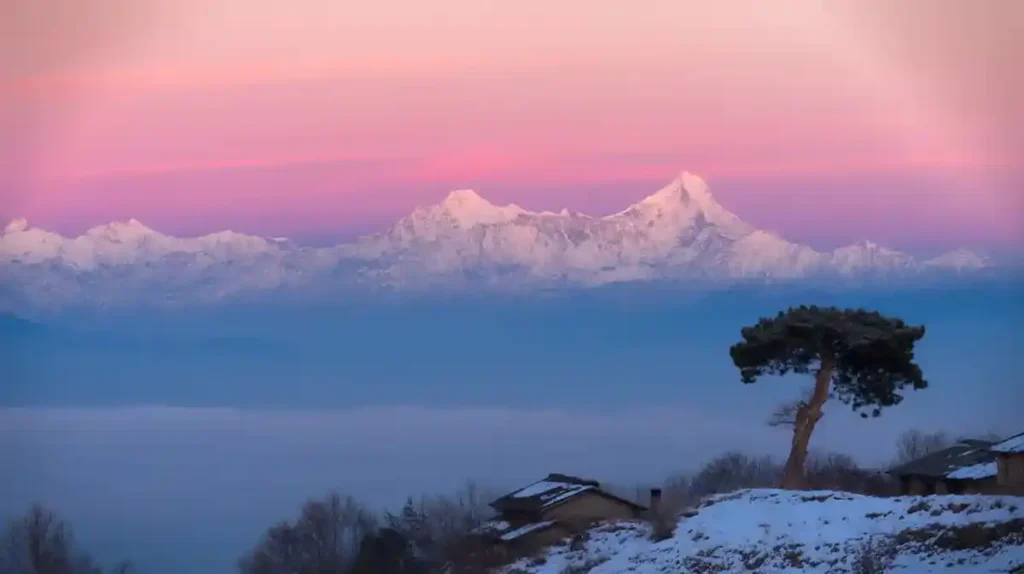
Nagarkot, a beautiful hill station, is just 32 km from Kathmandu. Though snowfall here is not frequent, the panoramic views of the Himalayas, including the Everest, Langtang, and Ganesh Himal ranges, are stunning when it does snow. It’s great for sunrise, sunset, and exploring the local culture. This is a quiet escape that’s easy to reach by taxi or bus. Pack warm clothing and enjoy the fresh mountain air.
3. Daman
Daman, located about 80 km southwest of Kathmandu in Makawanpur, is a peaceful snowfall destination known for its scenic beauty. The area is rich in local produce like sweet apples and goat milk cheese, and it features a lovely botanical garden.
Visitors are treated to views of Mount Everest and other Himalayan peaks. Snowfall is common between January and March. It’s ideal for hiking, sightseeing, and relaxing in a serene environment.
4. Chandragiri Hills
Just 1 hour from Kathmandu, Chandragiri Hills is a fantastic day-trip destination for snow lovers. The Chandragiri Cable Car takes you up to a hilltop offering gorgeous views of the Annapurna, Langtang, and Ganesh Himal ranges.
When snow falls, the area becomes a gorgeous winter wonderland. The place is well developed, and the journey is smooth. Snow generally appears in late December to February.
5. Phulchowki Hill
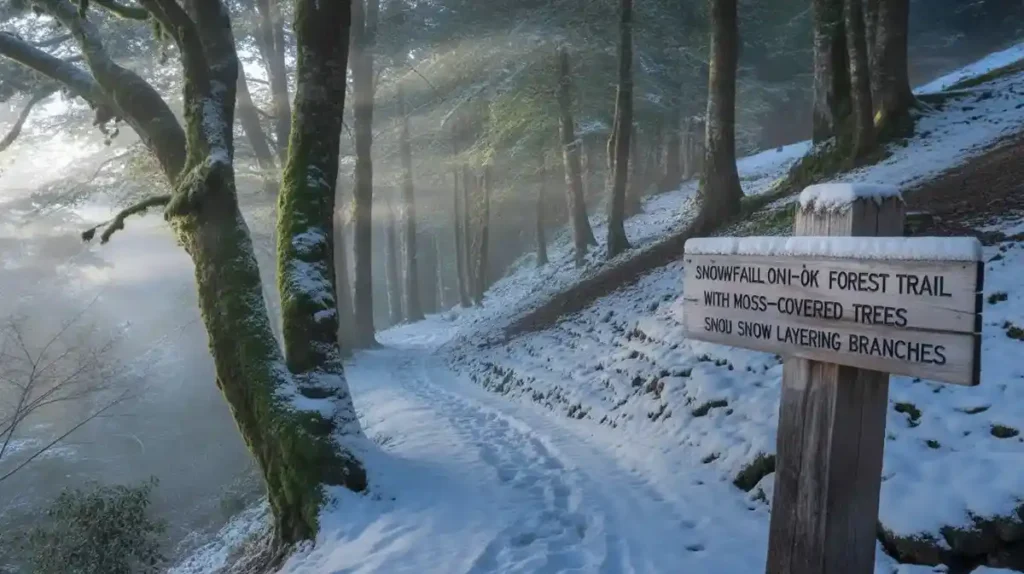
Phulchowki, the highest hill in the Kathmandu Valley at 2,700 metres, is known for its short day hikes and winter snow. Located near the Godawari Botanical Garden, the trail offers a calm and scenic forest route.
The hike takes about 3–4 hours, but snow can often be seen without reaching the summit. It’s a beautiful place to enjoy light snowfall close to the city.
6. Annapurna Region
The Annapurna Region is a top trekking destination in north-central Nepal, especially during winter. Heavy snowfall turns this region into a dream for snow trekking. Treks like the Annapurna Circuit, Annapurna Base Camp, and Poon Hill showcase beautiful snow-covered landscapes.
With the help of a guide and porter, even the coldest days become enjoyable. It’s also a great chance to witness local villages, Sherpa culture, and the majestic Himalayas.
7. Everest Region
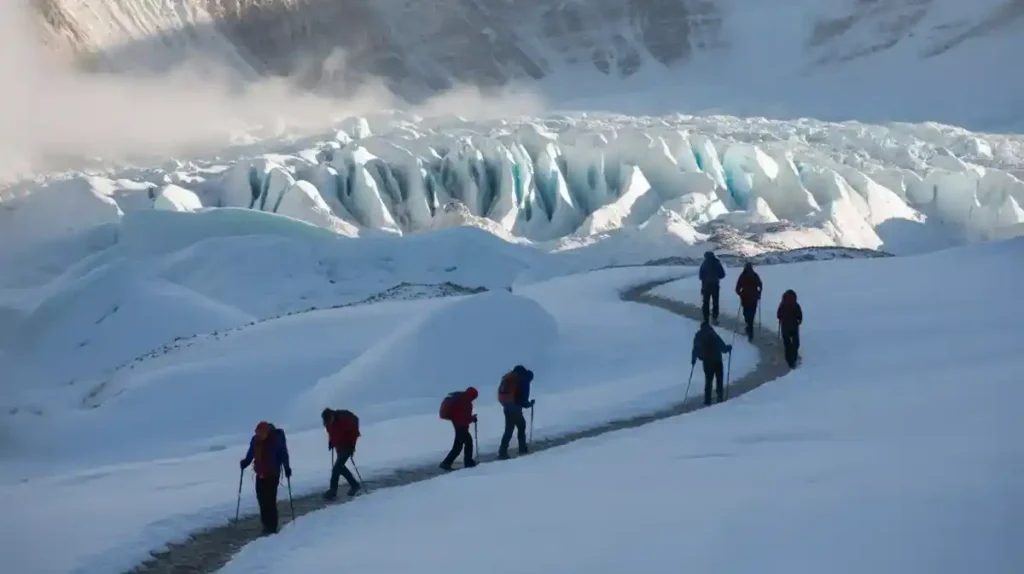
The Everest Region, home to the world’s highest peak, is perfect for those seeking adventure and snow. Winter treks to Everest Base Camp are a rewarding experience, offering views of the Khumbu Icefall and the powerful beauty of the Himalayas.
This high-altitude trek requires acclimatization and proper gear, and hiring an experienced guide and porter is always recommended. It’s a true winter adventure through snow-covered trails and Sherpa villages.
Nepal’s Seasons Explained
Nepal has five distinct seasons—Spring, Summer, Monsoon, Autumn, and Winter—each offering unique weather, landscapes, and activities for travelers.
From blooming forests in spring to snowy mountain views in winter, every season in Nepal brings its own beauty and charm.
Nepal’s natural beauty changes with its five vibrant seasons. These distinct times of the year offer different kinds of travel experiences, cultural festivals, and adventures in the mountains and valleys. Each season has something special to offer, no matter when you visit.
🌸 Spring (March to May)
Spring is one of the most beautiful times in Nepal. The hills and forests come alive with rhododendron blooms, wildflowers, and clear blue skies. It’s perfect for trekking, especially in popular regions like Annapurna and Everest Base Camp.
The mild temperatures and pleasant weather make it ideal for nature walks, sightseeing, and exploring cultural heritage sites.
You’ll also enjoy festivals, expeditions, and fewer crowds than in autumn. This season feels like a rebirth, filled with colors, flora, and fresh air.
☀️ Summer & Monsoon (June to August)
These months bring warm and humid days, turning Nepal into a lush green paradise. The vegetation thrives, making it a dream for botanists and nature lovers.
Rain-shadowed regions like Upper Mustang and Dolpo remain accessible and offer dry treks with stunning scenery.
The countryside is full of life. Ropain Festival on Asar 15 celebrates paddy planting with singing, dancing, and playing in mud.
Mango trees bloom across the Terai region, adding to the tropical beauty. Cultural attractions and discounts at hotels also make this a rewarding time to explore Nepal.
🍁 Autumn (September to November)
Autumn is the best season for tours, treks, and mountain views. The skies are clear, the climate is stable, and the air feels fresh and clean.
You’ll enjoy perfect visibility of snow-capped Himalayan peaks, making it ideal for photography, long hikes, and cultural events.
It’s also when Nepal celebrates its greatest festivals—Dashain, Tihar, and Chhath. The landscapes are at their most vivid, and the atmosphere is full of joy and color.
❄️ Winter (December to February)
Winter brings cool, crisp days and magical views of snowy-capped mountains. It’s a great time for quiet exploration, short treks, and cultural tours in the Kathmandu Valley or foothills below 4,000 meters. The scenery in places like Poon Hill is simply breathtaking.
This season is also popular for locals, schools, and colleges to enjoy the inter-season. Whether you’re after solitude, photography, or peaceful vacations, winter offers plenty of possibilities.
Nepal’s five seasons—Spring, Summer, Monsoon, Autumn, and Winter—each bring their own rhythm, weather patterns, and highlights.
From the lush green forests of summer to the crystal-clear skies of autumn and the snow-dusted peaks of winter, Nepal is a year-round paradise for all types of travelers.
Nepal Weather Month-by-Month
Nepal’s weather changes beautifully each month, offering unique experiences in every season. From snowy mountain views in winter to blooming flowers in spring, warm summers, and clear skies in autumn, every month brings something special across Nepal’s diverse landscapes
Month-by-Month Weather in Nepal
Nepal’s diverse geography—from the low-lying Terai to the high Himalayas—creates distinct weather patterns across its four seasons. Whether you’re in the subtropical plains or the cool mountain regions, each month brings its own charm.
Winter (December to February)
- Cool and calm with clear skies
- Temperatures range from 2°C to 12°C in Kathmandu
- Best for seeing stunning mountain views
- Great time for exploring mid-hills and cultural cities
Spring (March to May)
- Weather becomes pleasant and warm
- Blooming rhododendrons and green landscapes
- Perfect for trekking and sightseeing
- Temperatures start to rise, reaching up to 35°C in some areas
Summer/Monsoon (June to August)
- Warm and humid with heavy rainfall
- Nature is lush and vibrant
- Beautiful for short, scenic trips and exploring Pokhara, which gets up to 33°C
- Clouds add a dramatic touch to mountain backdrops
Autumn (September to November)
- Very comfortable with clear skies and fresh air
- Great for hiking, sightseeing, and mountain photography
- Temperatures become moderate and enjoyable
- Popular time for trekking in high altitudes like Namche Bazaar (3,450 meters)
Climate by Region
Kathmandu
- Temperate climate with pleasant weather year-round
- Ideal mix of culture and comfortable conditions
Pokhara
- Hotter than Kathmandu
- Known for beautiful lakes and close-up Himalayan views
- High Altitude Regions
- Cool throughout the year
- Stunning natural beauty and fresh, crisp air
Nepal’s weather is a rewarding experience all year. Each month offers a new adventure, and every region has its own magical charm.
Essential Travel Tips for Seeing Snow in Nepal
To see snow in Nepal, visit during winter (December to February), and head to places like Kalinchowk, Manang, and Annapurna. Pack warm, waterproof clothes, sturdy boots, and sun protection. Stay safe by acclimatizing at high altitudes, hydrating well, and considering a local guide for trekking.
Seeing snow in Nepal is a magical experience. The country offers stunning mountains, beautiful views, and unforgettable treks. To enjoy your snow journey, a little planning goes a long way.
Best Time to Visit
Nepal’s winter season—from December to February—is the ideal time to enjoy snowfall. The weather is often clear, with blue skies and crisp temperatures. For the best snowy scenes, check the forecast before heading out.
Top Places to Experience Snow
Explore amazing high-altitude spots like:
- Kalinchowk
- Manang
- Langtang
- Annapurna Base
- The hills around Nagarkot, Pokhara, and Kathmandu
- These areas are known for their natural beauty and chances of snow during winter.
What to Pack
- Be ready for cold and icy conditions:
- Thermals, fleece, and a down jacket to stay warm
- Waterproof and windproof pants and jackets
- Insulated boots with grippy soles for snowy terrain
- Hat, mittens, scarf, and warm socks
- A sleeping bag rated for low temperatures
- Don’t forget sunscreen, lip balm, and sunglasses—the sun at high altitudes is strong and can cause exposure.
Stay Safe and Comfortable
To enjoy your trek:
- Stay hydrated to prevent fatigue
- Move slowly to acclimatize and stay well
- Hire a guide if you’re new to trekking
- Learn and respect local customs and traditions
Snow in Nepal is more than just a sight—it’s a full experience of nature, culture, and quiet mountain charm.
Conclusion
Nepal turns into a magical winter escape during the colder months. The snowy beauty of places like Phulchowki, Kalinchowk, Nagarkot, and Kakani makes it a perfect destination for snow lovers. These hilly areas and higher altitudes, especially above 3,000 metres, receive snowfall that creates stunning white peaks and peaceful trails.
Popular spots such as Chandragiri and Everest offer breathtaking views with permanent snow in some regions. For those who enjoy trekking, the icy paths and quiet surroundings turn every step into an adventure. Watching the weather forecasts helps plan a smooth trip, especially when traveling in groups.
The contrast between the city lights and serene snow-covered landscapes creates a unique experience. Each snowflake, every silent trail, and the sense of escape from the ordinary turn a visit to snowy Nepal into a beautiful story worth remembering.
FAQs – People Also Ask (PAA) Queries Answered
Do Nepal have snowfall?
Yes, Nepal gets snowfall in winter, especially in high mountain areas like the Everest and Annapurna regions. Snow also falls in nearby hill stations like Chandragiri, Phulchowki, and Kakani.
Has it ever snowed in Kathmandu?
Yes, but it’s rare. Kathmandu has seen snow in 1945, 2007, and 2019. Light snow sometimes falls in nearby hills like Phulchowki and Chandragiri in January or February.
Has it ever snowed in Pokhara?
Pokhara doesn’t usually get snow, but you can see snow-covered mountains like Annapurna and Dhaulagiri in winter. The views are stunning from the city’s lakeside and nearby hills.
Which place is full of snow?
The higher regions like Everest Base Camp, Annapurna Base Camp, and Langtang Valley are full of snow in winter. These areas stay snowy from December to February.
Does Kathmandu experience snowfall?
Snowfall is very rare in Kathmandu city, but nearby hills such as Chandragiri and Phulchowki do get snow in winter. These spots are easy to reach for a snow trip.
Which month does Nepal get the most snow?
January gets the most snow in Nepal, especially in high-altitude places. Snowfall also happens in December and February.
Where can I see snow in Nepal without trekking?
You can visit Kalinchowk, Chandragiri, Phulchowki, Nagarkot, or Daman to see snow without trekking. These places are close to Kathmandu and good for short trips.
What is the snowiest place in Nepal?
Kalinchowk is one of the snowiest and most visited places in Nepal. It offers deep snow, mountain views, and fun activities during winter.
Is Nepal good to visit in winter?
Yes, winter in Nepal is great for snow views, peaceful treks, and clear skies. You can enjoy culture, festivals, and quiet nature during this time.
What to wear in Nepal in December/January?
Wear warm clothes like thermals, fleece, down jackets, gloves, hats, scarves, and warm boots. Carry sunscreen and sunglasses too.
Can I see snow in Nepal in May?
No, May is warm in Nepal and snowfall is unlikely. The snow starts melting in most areas by March.
Where to find snow near Kathmandu?
You can go to Chandragiri, Phulchowki, Kakani, or Nagarkot to find snow near Kathmandu. These are short day trips from the city.
How far is Kathmandu from snowfall?
Snowfall is about 1–3 hours away from Kathmandu. Places like Chandragiri and Phulchowki are nearby and easy to reach.
Where to see snow near Kathmandu?
Phulchowki Hill, Chandragiri Hills, Nagarkot, and Daman are good places to see snow near Kathmandu in winter.
Is Nepal very cold?
Nepal is cold in winter, especially in the mountains. Cities like Kathmandu and Pokhara stay cool but comfortable with sunny days.
Why is Pokhara so famous?
Pokhara is famous for its lake, mountain views, and peaceful vibe. It offers great views of snowy peaks and is perfect for relaxing.
Disclaimer
This information is provided for general travel planning. Weather conditions and accessibility may vary. Always check forecasts and local advisories. For more travel insights, visit traveldrizzle.com—your trusted snow season guide.
